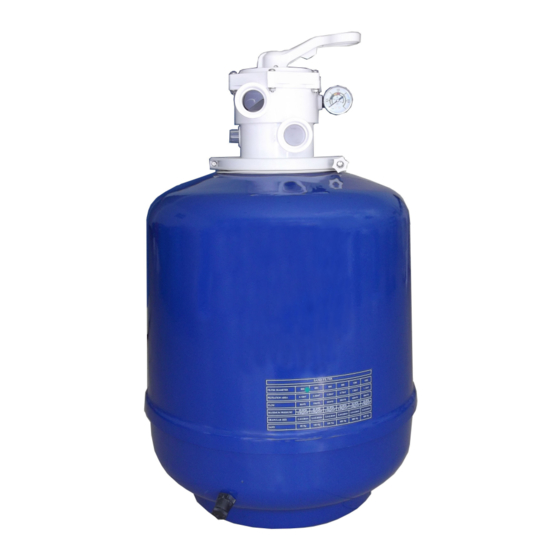Aquant BWT Series Installation Manual - Page 3
Browse online or download pdf Installation Manual for Water Filtration Systems Aquant BWT Series. Aquant BWT Series 14 pages. Top-mount sand-filter for swimming pool

ENGLISH
`
pH LEVEL
The pH level is an indicator of acidity or alkalinity present in the water. The
neutral value is 7.0 pH. From 0 to 7 are the levels of acidity whilst from 7 to
14 are those of alkalinity. The pool usual readings vary between 6.8 and 8.4.
Why pH is important?
"THE IDEAL PH VALUE IN A POOL SHOULD BE BETWEEN 7.2 AND 7.6".
As previously stated, sufficient residual chlorine must exist in the pool to
destroy unwanted micro-organisms, in fact the chlorine will only act as a
bactericide when the pool water has a pH of between 7.2 and 7.6.
There are other reasons which call for a correct pH level: Once above 7.6,
calcium in the pool will precipitate to a visible cloudy form (accentuated in
hard water areas).
This gives a milky appearance to the water, and hinders the filtering;
deposits may also appear on the pool walls and fittings.
Once the pH level falls below 7.0 the pool water becomes corrosive causing
eye irritation and affecting mucous membranes. There is also a long term
threat to metallic parts in the pool.
The quality of the pool water is highly dependent on maintaining constantly
the correct pH level.
CHLORINE
Standards for the amount of residual (free) chlorine in the pool water may
vary from country to country, depending on health authority regulations.
Typical legal requirements are between 0.2 and 0.6 parts per million, (i.e.
0.2-0.6 milligrams per litre).
What is understood by free or residual chlorine?
Even after the filtering process, certain bacteria remains to be destroyed by
the disinfecting action of the chlorine which is usually acting on the bacteria
in the form of hyperchloride acid.
